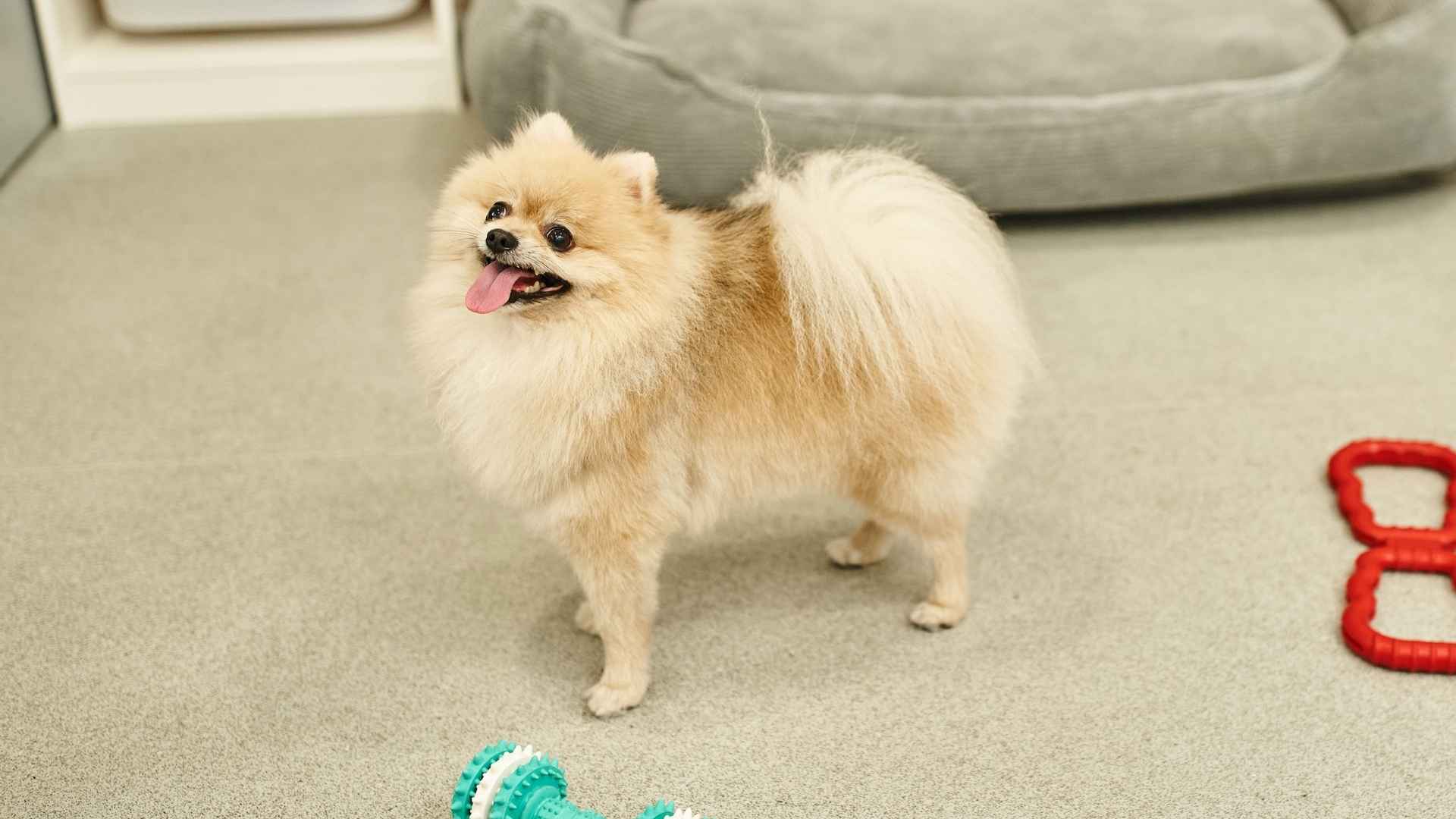Small space, big energy? That’s a recipe for chewed shoes and neighbor complaints—unless you have the right dog.
Living in an apartment doesn’t mean giving up on canine companionship. It simply requires a little problem-solving. The key lies in choosing breeds that adapt well to limited space, thrive with indoor routines, and know how to stay calm when the elevator breaks or the neighbors get noisy.
From intelligent toy breeds to mellow larger companions, certain dogs are natural problem-solvers. They adjust quickly, learn fast, and blend into apartment life with ease.
This article explores top breeds backed by expert sources that meet both the challenges of apartment living and the need for a clever, adaptable pet. If you’re looking for a pup that makes city living smoother, this is where your search begins.
Problem-Solving Apartment Dog Breeds
1. Papillon
The Papillon is a toy breed known for its butterfly-shaped ears, weighing between 7 and 11 pounds. Despite its dainty appearance, this breed is energetic and thrives on structured interaction. Their alertness and responsiveness make them stand out in both companionship and training settings.
Papillons have a strong aptitude for learning and are quick to pick up new commands and routines. Their sharp minds make them excellent candidates for trick training and puzzle toys. For owners in compact homes, this intelligence means fewer behavior issues when mentally stimulated.
They don’t require extensive outdoor exercise, which is ideal for apartment living. Short daily walks combined with indoor play are sufficient to meet their energy needs. Activities that engage both body and brain are most effective for their well-being.
This breed is highly people-oriented and does not do well when left alone for long periods. They respond well to crate training and enjoy tasks that reward problem-solving. Consistent interaction helps prevent boredom-based behaviors like chewing or barking.
As noted by the AKC, Papillons are ranked among the most intelligent toy breeds and excel in activities like agility, rally, and obedience competitions.
Quick Tips
Use interactive toys to avoid boredom indoors
Introduce crate training early to encourage calm independence
Keep training diverse to match their high learning capacity
2. Pomeranian
Lively and confident, the Pomeranian combines a fox-like face with a sharp mind, all in a compact 3 to 7-pound frame. Their high energy doesn’t demand a yard but does require direction, especially in apartment environments. Active supervision and consistent boundaries help channel their curiosity productively.
They excel in short, frequent training sessions that reinforce discipline without overwhelming them. These dogs enjoy learning tricks and respond enthusiastically to praise and treats. Early socialization is crucial to temper their natural territorial instincts.
Pomeranians shed moderately year-round, with heavier seasonal cycles, so regular grooming is a necessity. Brushing not only maintains coat quality but also reduces allergens in shared indoor spaces. Bathing should be limited to every few weeks to preserve natural oils.
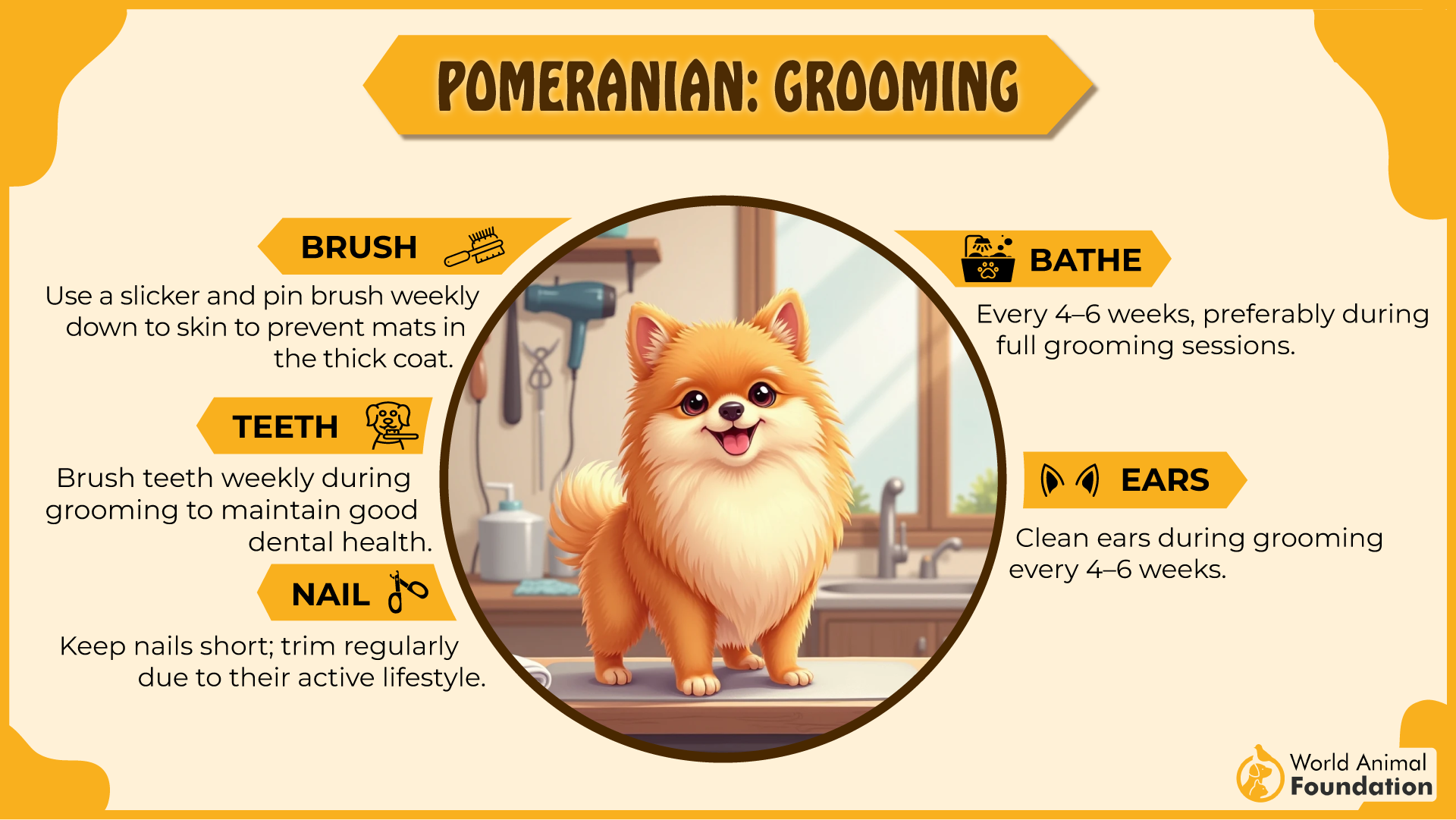
Although vocal by nature, their barking can be controlled through early training and redirection techniques. They’re quick to alert their owners but can learn when to stay quiet with consistent cues. Mental games and rotating interactive toys help reduce attention-seeking behaviors.
Quick Tips
Redirect barking early with focused training
Brush coat three times a week to control shedding
Rotate toys weekly to avoid boredom-based behavior
3. Havanese
The Havanese is a social and emotionally intuitive breed that adjusts easily to the rhythms of home life. Weighing between 7 and 13 pounds, they stay close to their people and often mirror moods and routines. Their cooperative disposition is well-suited to apartment living, especially when owners are present often.
They’re responsive to verbal cues and positive reinforcement, excelling in environments where structure and engagement are consistent. These dogs are emotionally driven learners and often anticipate daily activities before they’re announced. Overcorrection tends to reduce trust, so training should remain firm but gentle.
Physical exercise needs are modest—two short walks or a few interactive indoor sessions each day typically suffice. Their small size makes it easy to meet movement needs without outdoor access. Quiet play options work well for this breed, especially in multi-unit housing.
Their coat requires frequent brushing to prevent matting, especially around the ears and joints. Regular trims or tying up long facial hair helps keep vision clear and reduces moisture-related skin issues. Nail care and ear cleaning should be added to the weekly routine.
Quick Tips
Use soft grooming tools to avoid tugging delicate fur
Incorporate obedience games to reinforce structure
Schedule ear and eye care weekly to prevent buildup
4. Poodle
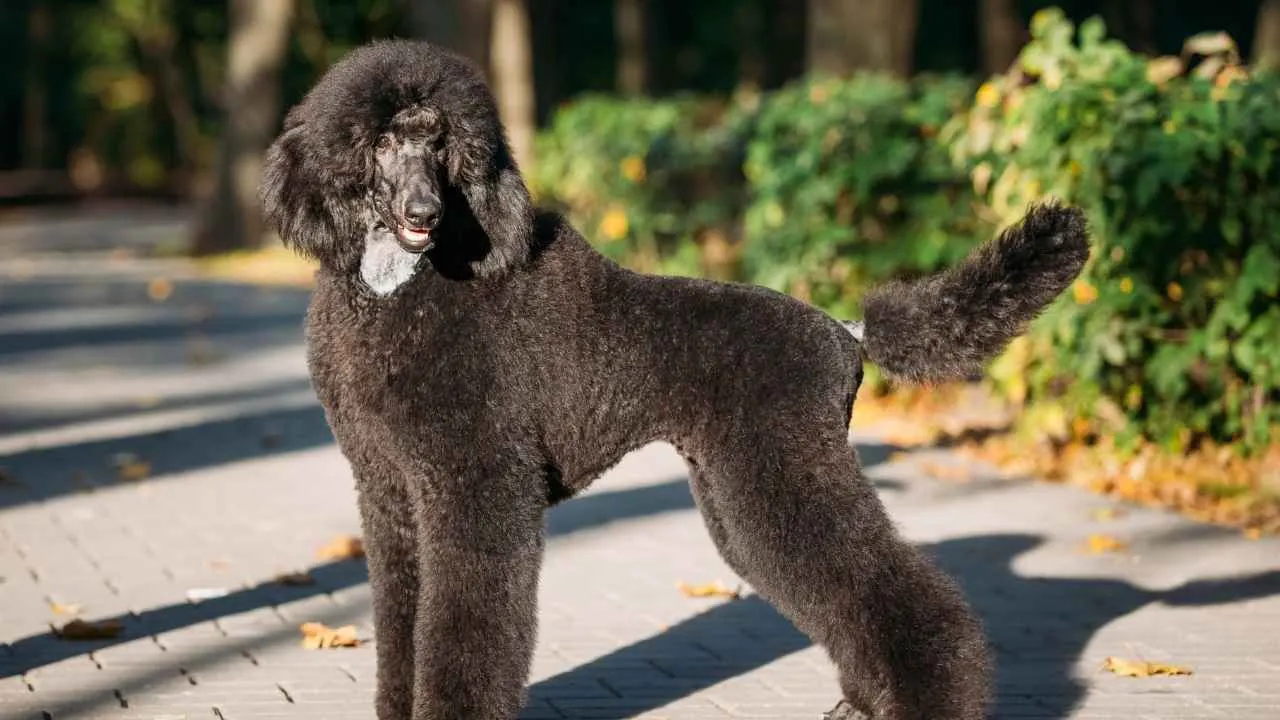
Poodles come in toy, miniature, and standard sizes, known for their sleek coats and sharp minds. They adapt well to apartment life as long as they receive daily mental and physical challenges. Their hypoallergenic fur and eagerness to please make them low-shedding and readily trainable indoor companions.
These dogs thrive with structured routines that involve obedience, scent work, or agility drills. Toy and miniature Poodles are especially suited to smaller spaces, but even the larger standard variety can adjust with sufficient activity. Their high intelligence helps them adjust their behavior quickly in confined environments.
Grooming needs are higher due to their curly coats, requiring regular brushing and trim schedules. Without proper maintenance, mats can form, leading to skin irritation. Attention to ear cleaning and dental care rounds out their grooming routine.
Poodles are vocal but respond efficiently to sound-based training cues. Consistent reinforcement helps them recognize acceptable noise levels. Interactive toys and obedience practice help curb boredom-driven barking.
Quick Tips
Schedule daily mental games like scent or trick drills
Use non-shedding grooming tools to maintain curly coats
Reinforce quiet command training to control barking
5. Cavalier King Charles Spaniel

Cavaliers are affectionate lap dogs that typically weigh 13–18 pounds and remain calm in indoor settings. Their even temperament and moderate exercise requirements fit well with apartment routines. They can easily engage in brief daily walks and relaxed indoor play.
These dogs are emotionally attuned and respond promptly to human cues, making them eager learners. They benefit from consistent, reward-based training, particularly in social settings like shared hallways. Their amiable nature makes them popular with both novice and experienced owners.
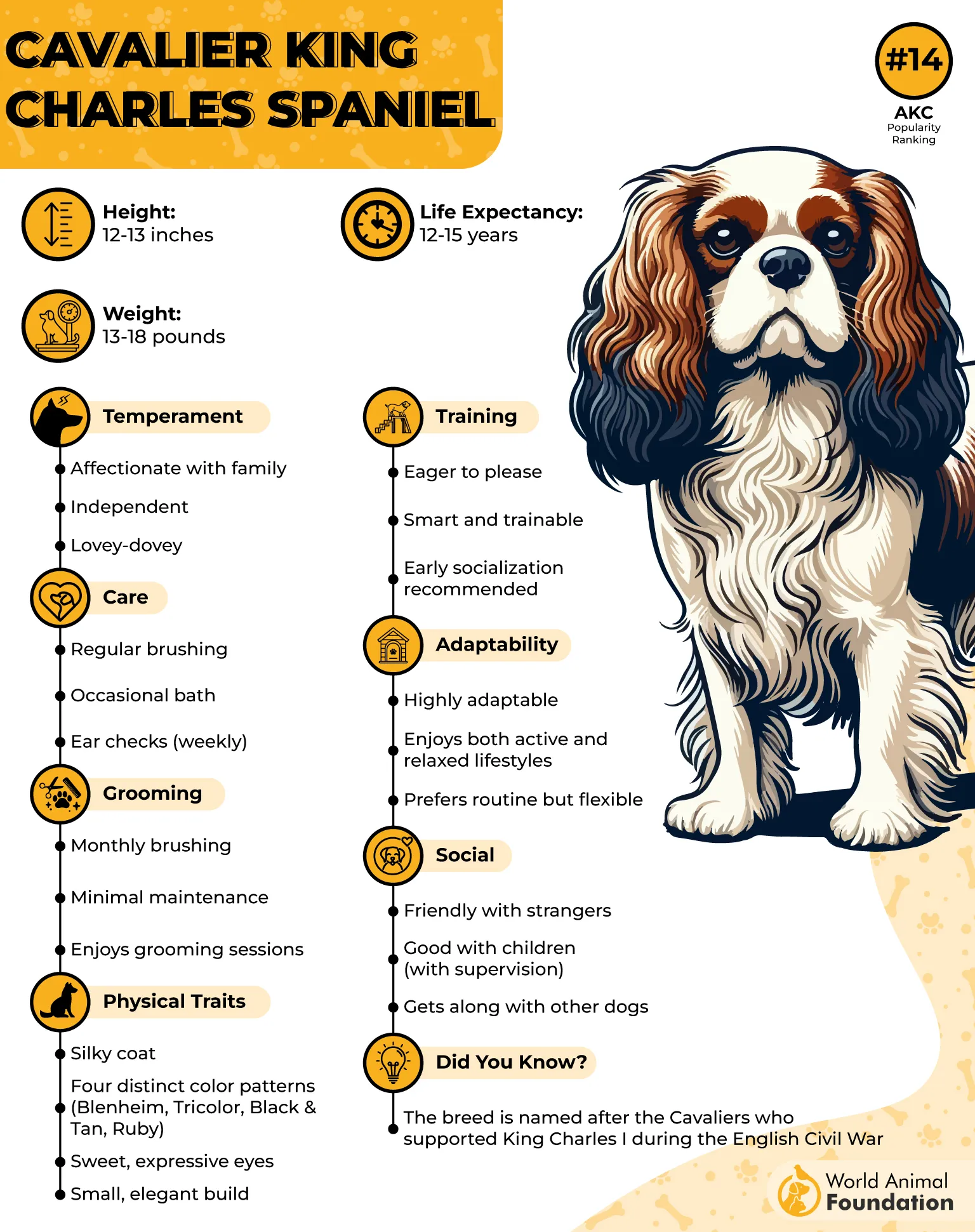
Coat maintenance demands weekly brushing to prevent tangles and reduce shedding around sofas and rugs. Neglecting grooming can lead to mats and discomfort. Regular ear cleaning helps ward off infections due to their floppy ears.
Cavaliers can exhibit gentle alertness but are generally not excessive barkers. Training with “quiet” commands early on supports peaceful cohabitation in multi-unit buildings. Puzzle feeders or slow-feed bowls enhance mental stimulation at mealtimes.
As referenced by PetMD, Cavalier King Charles Spaniels balance moderate energy with adaptable dispositions, establishing them as excellent apartment companions.
Quick Tips
Brush coat weekly and inspect ears carefully
Use slow feeders to engage their minds
Practice quiet cues to reduce barking
6. Border Terrier
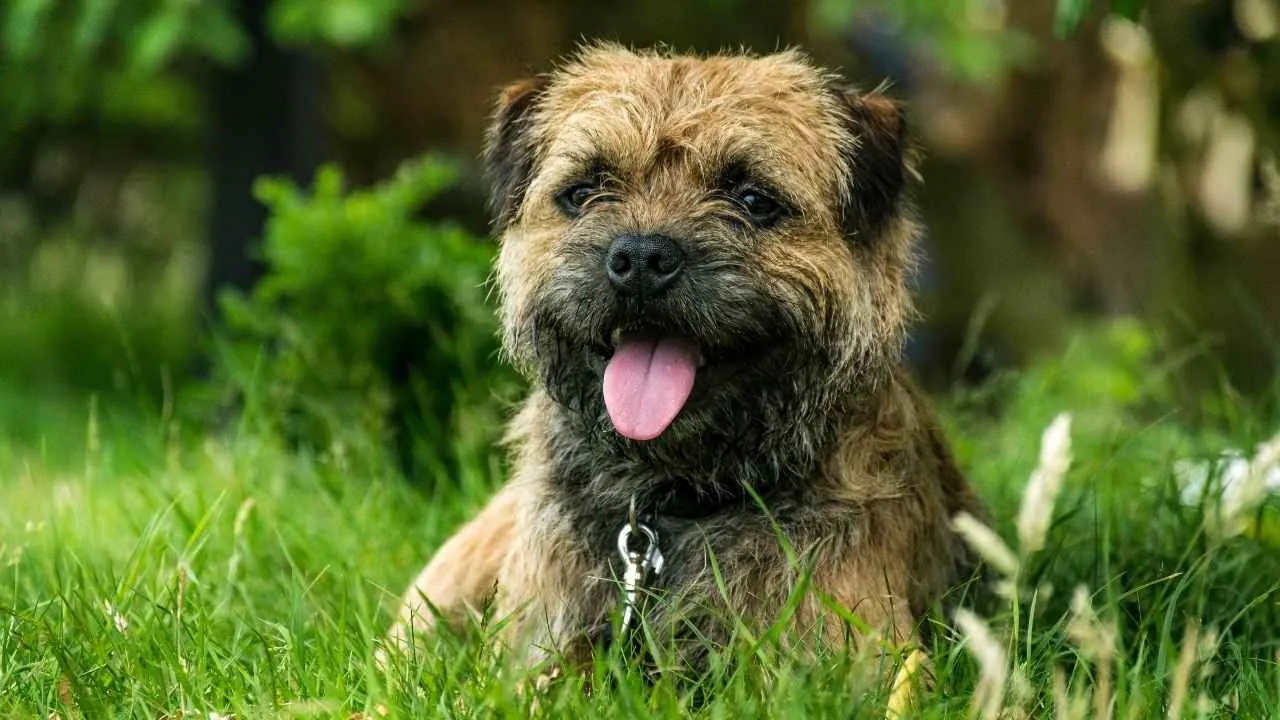
Border Terriers are agile, alert, and hardy, typically weighing 11–15 pounds, fitting well in compact living areas. Though they have a terrier drive, they are surprisingly mellow indoors when mental stimulation is provided. Their moderate energy makes them responsive to indoor games and daily outings.
They are easily trainable and excel in obedience when methods are consistent and positive. Early exposure to different sounds and surfaces helps reduce any nervous bark behavior. Their intelligence makes them quick to learn commands and manners.
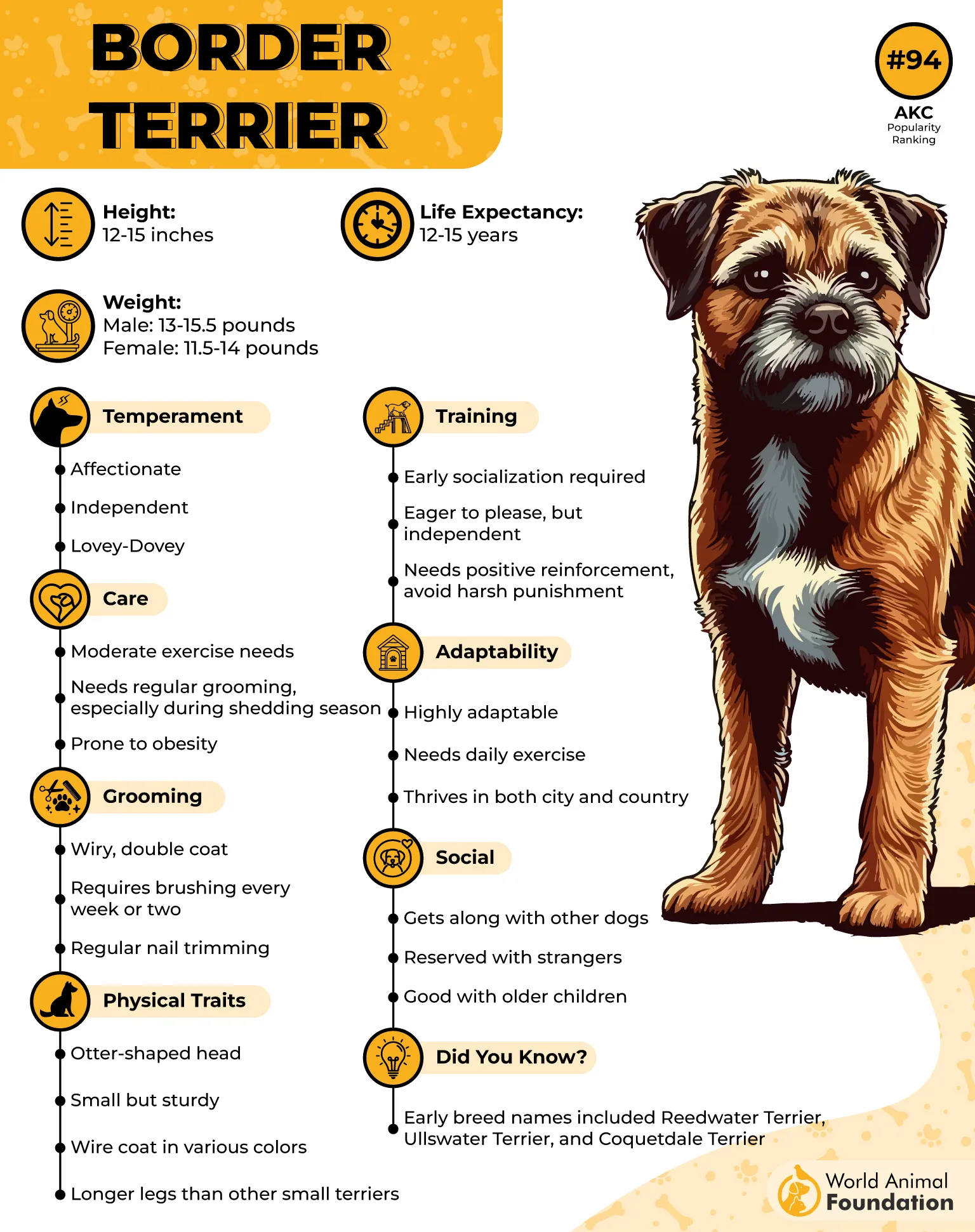
Grooming is minimal thanks to their wiry coat, which only requires occasional stripping or trimming. This low-shed coat helps keep apartments clean. Occasional brushing enhances comfort and minimizes muda (dead coat).
Border Terriers can display alertness at minor sounds but typically remain composed. Training around noise helps them understand when to stay quiet. Rotating chew toys and puzzle treat games satisfy their natural foraging instincts.
Quick Tips
Introduce obedience training with varied rewards
Trim coat seasonally to manage grooming easily
Provide chew and puzzle toys during alone times
7. Brussels Griffon
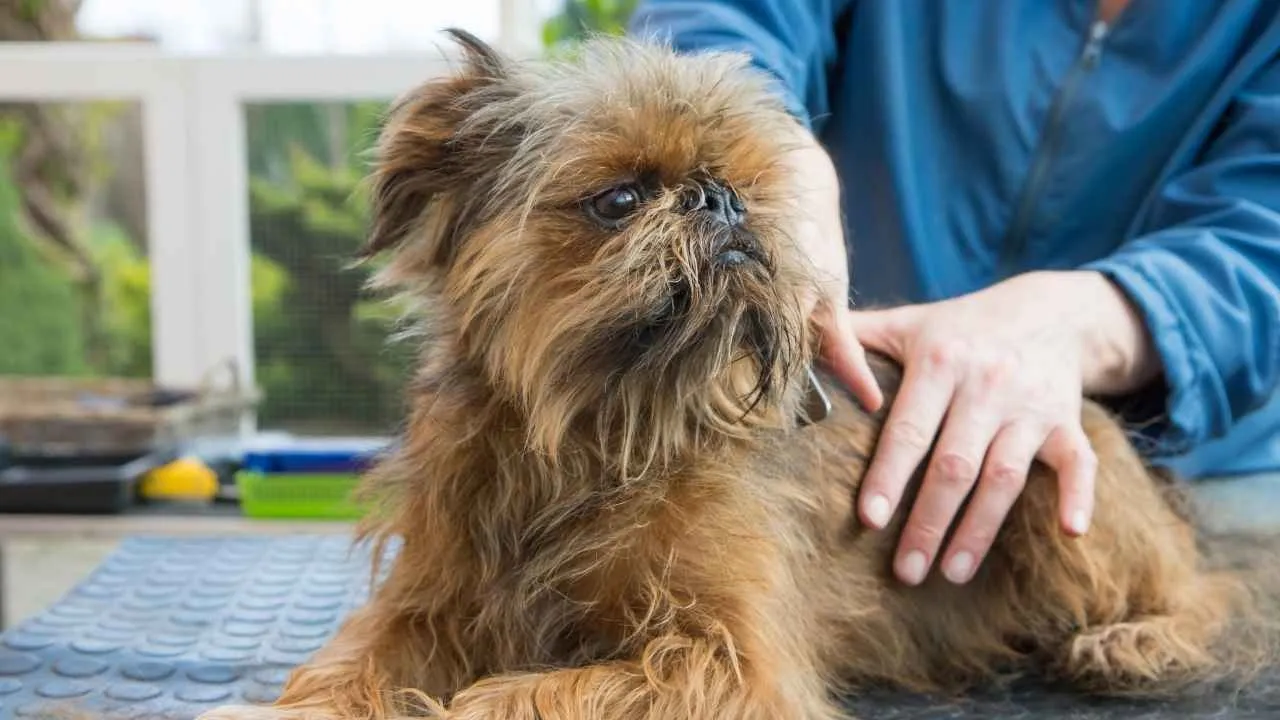
Purina states that Brussels Griffons are expressive, intelligent, and compact, usually under 12 pounds, making them ideal for shared indoor environments. They thrive when allowed to bond closely with families and participate in daily life. Their size and personality fit well into both studios and larger apartments.
These dogs show surprising problem-solving ability; they enjoy learning tricks and exploring new toy types. Gentle training methods amplify their willingness to comply. Their intelligence makes them good candidates for basic scent and agility challenges.
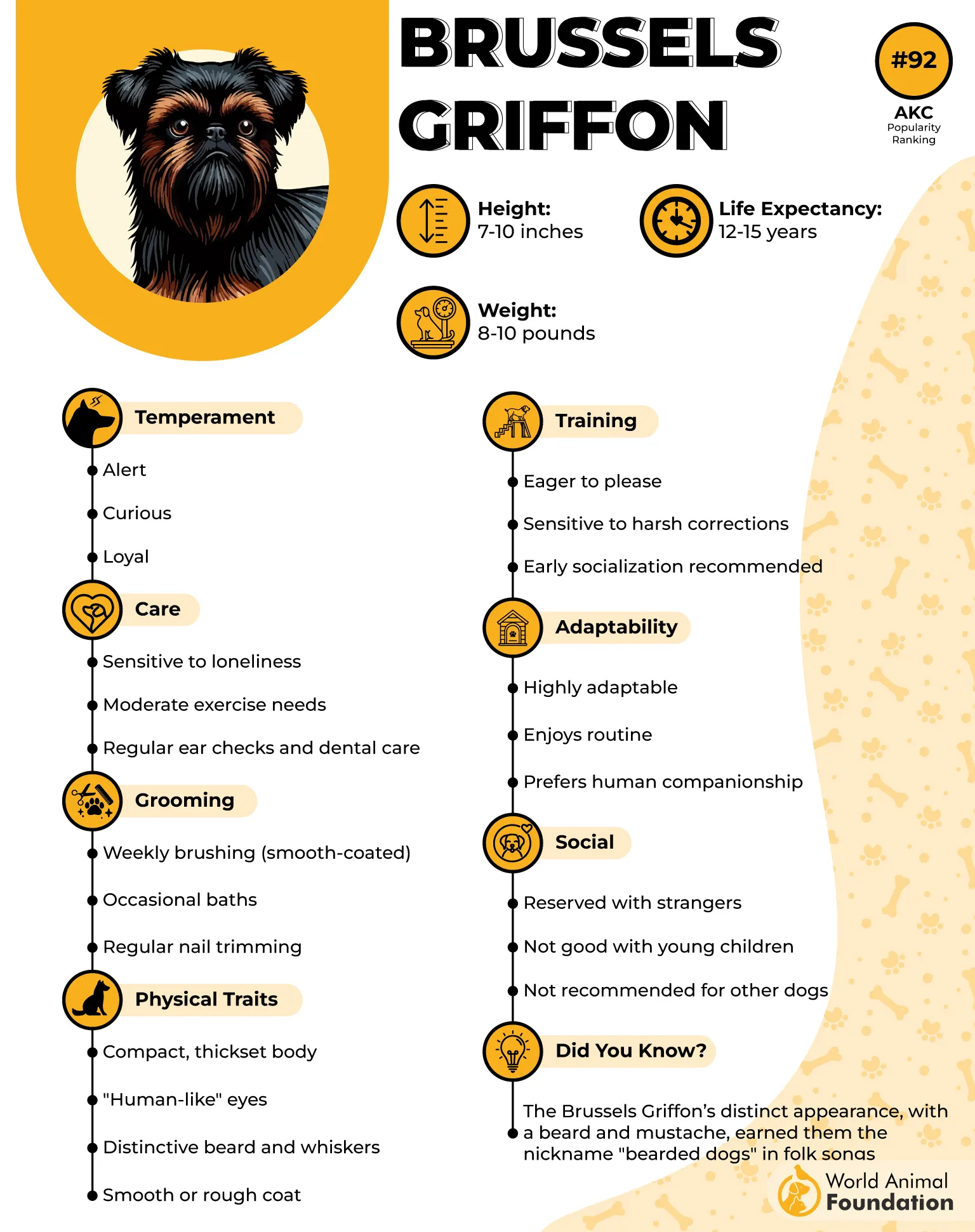
Their coat can be wired or smooth, requiring regular brushing, especially around the face and whiskers. Frequent attention prevents mats and supports skin health. Occasional trimming around eyes and feet ensures clarity of vision and movement.
Brussels Griffons can be sensitive to loneliness, so brief, achievement-focused training sessions help keep them confident when alone. They respond well to interactive feeders or short scent-finding games. Indoor games help maintain both their physical and mental equilibrium.
Quick Tips
Brush coat three times a week, focusing on facial fur
Use scent-based games to engage their minds during alone time
Keep training sessions brief but regular to support emotional balance
Conclusion
Finding the perfect dog breed for an apartment setting is about more than just size; it’s about temperament, adaptability, and how well a dog fits into compact living spaces. While many dogs enjoy outdoor spaces and long walks, others thrive on indoor playtime, short bathroom breaks, and time spent with their family members. For apartment dwellers, especially those balancing family life or other pets, breeds with a calm temperament, low energy needs, or a hypoallergenic coat can be the ideal match.
From small dog breeds like the Papillon and Havanese to highly trainable house dogs like the Poodle or the alert Border Terrier, each offers unique breed characteristics that suit different lifestyles. Even athletic breeds can succeed in apartment buildings with proper training and regular exercise. Whether you’re drawn to friendly dogs, couch potatoes, or hypoallergenic dogs, the best dog for your apartment will be one that aligns with your routine and space.
For pet parents living in smaller living spaces, choosing from the best dog breeds for apartments means considering both the dog’s needs and your own. Whether you’re a first-time owner or looking to expand your family with a furry friend, the right companion can thrive alongside you—no backyard required.


